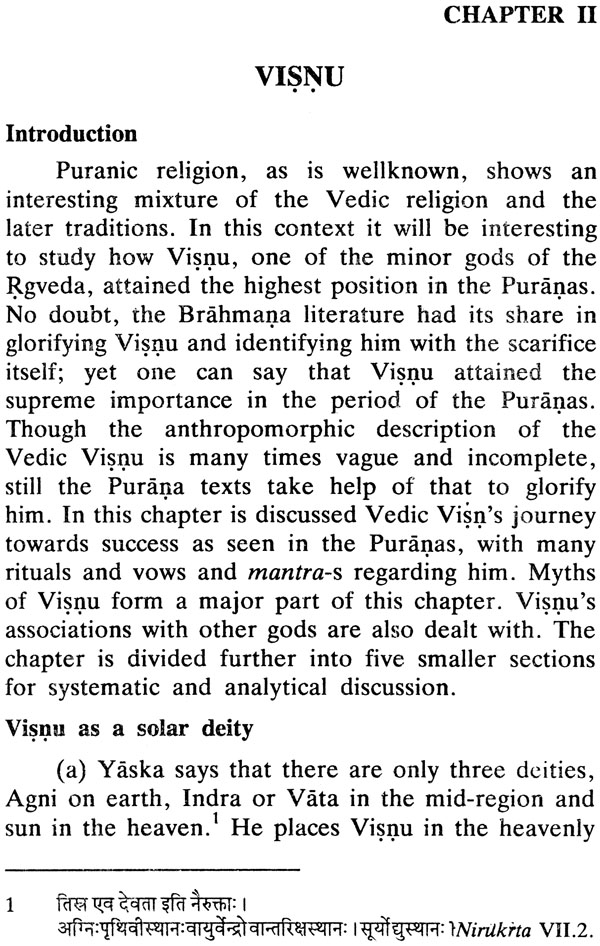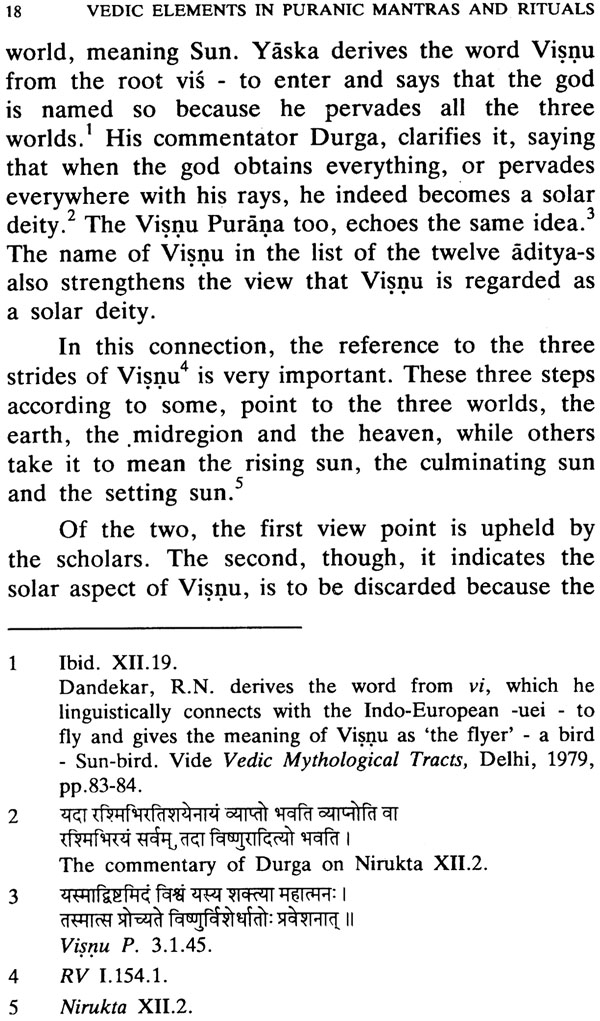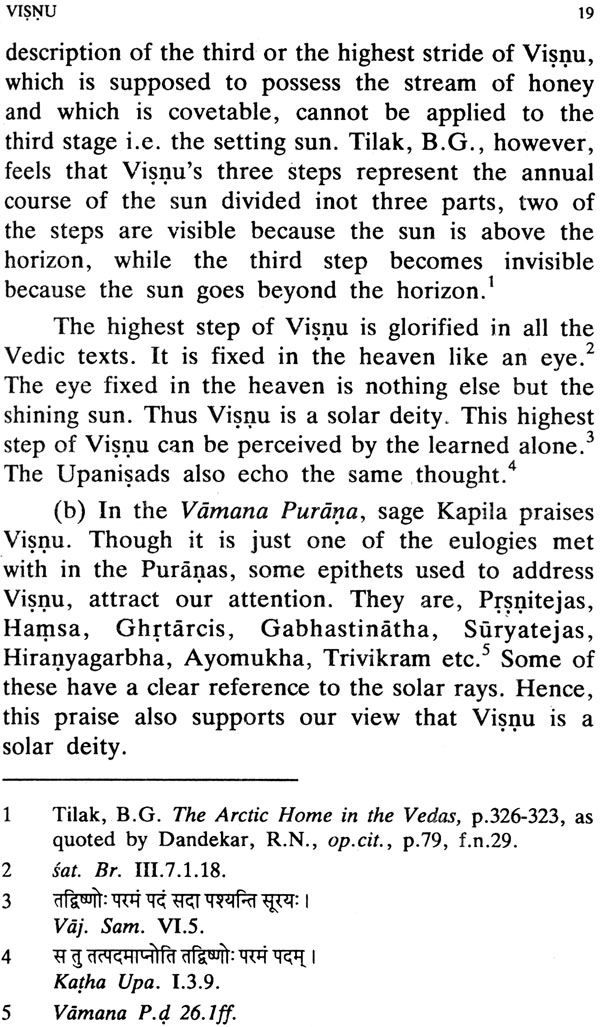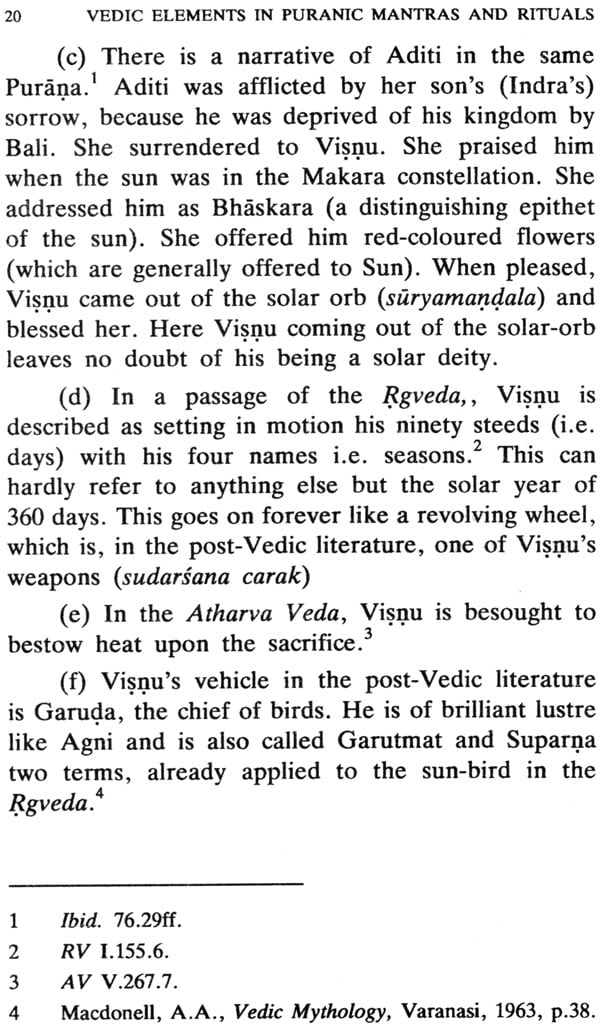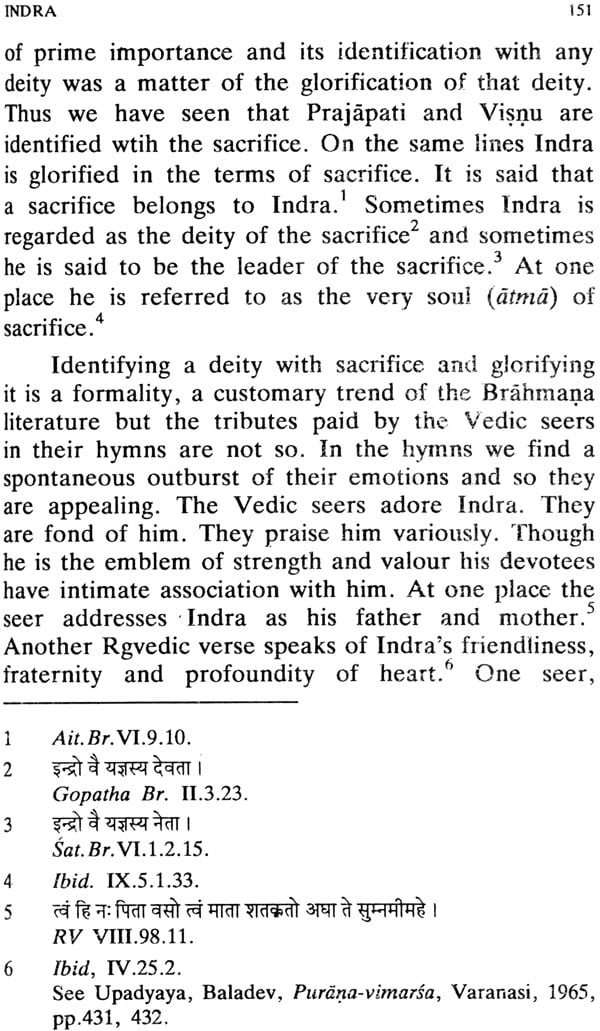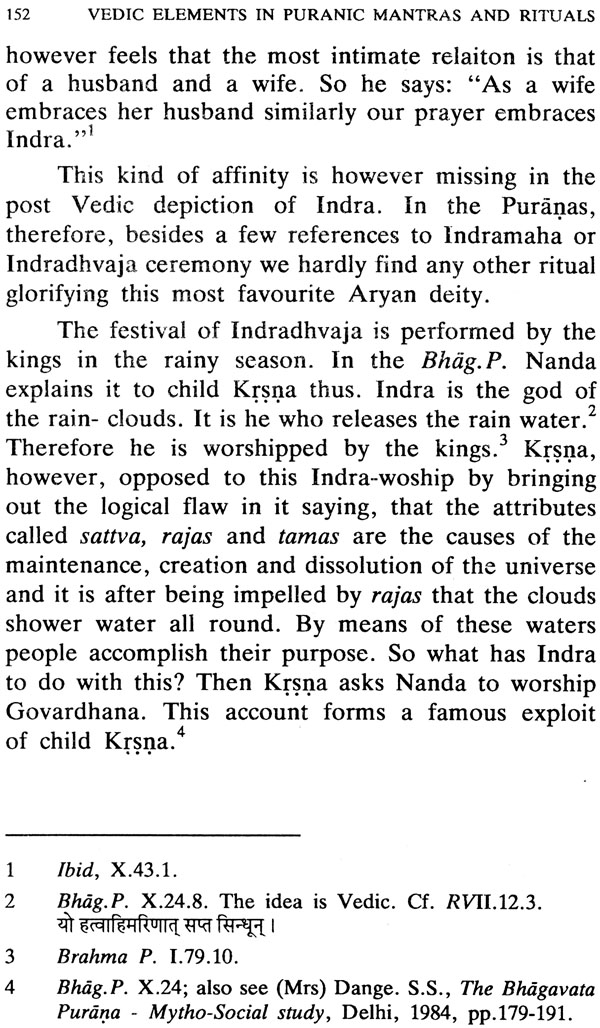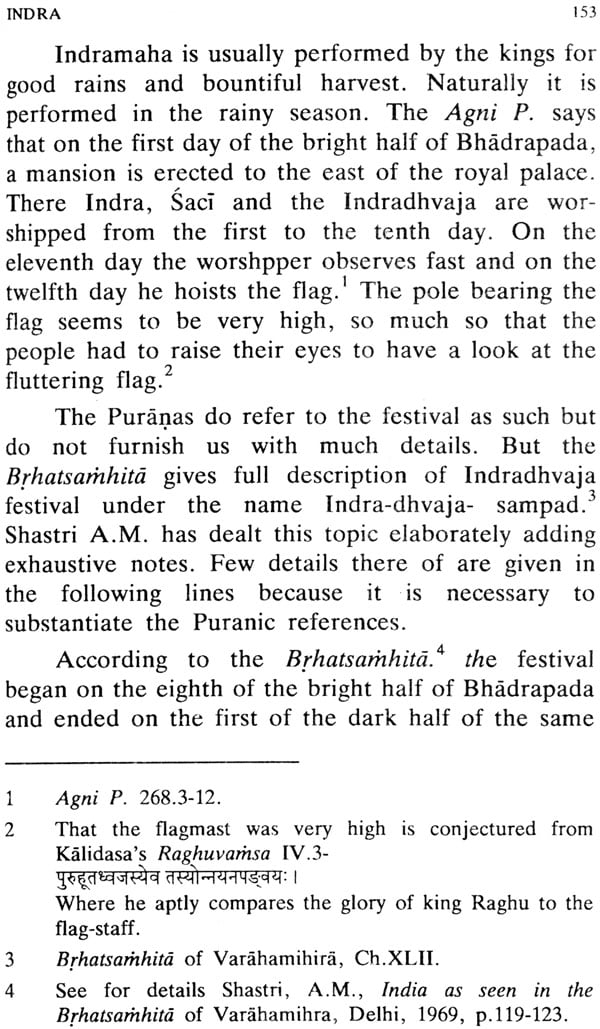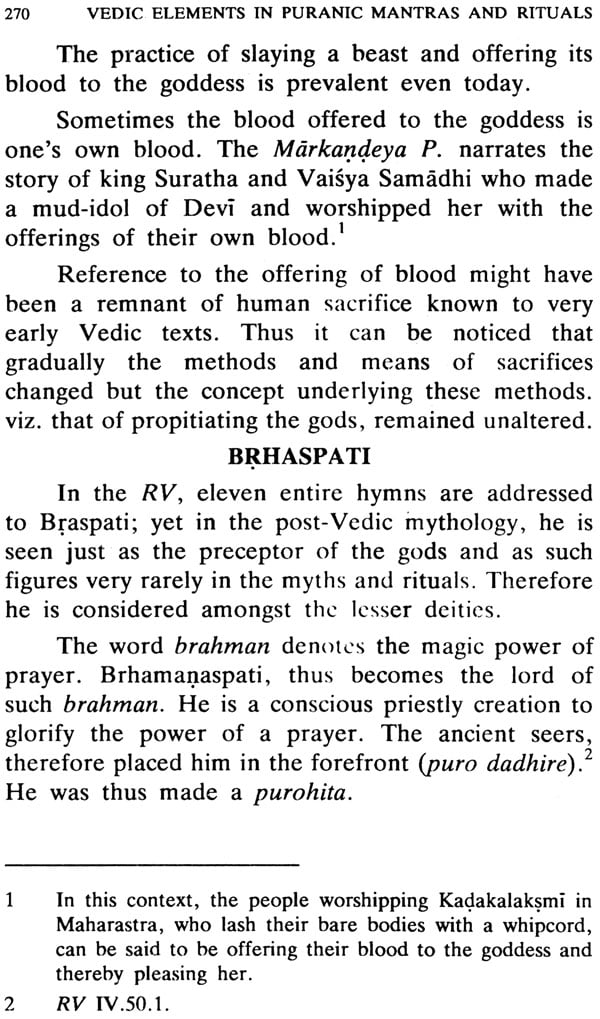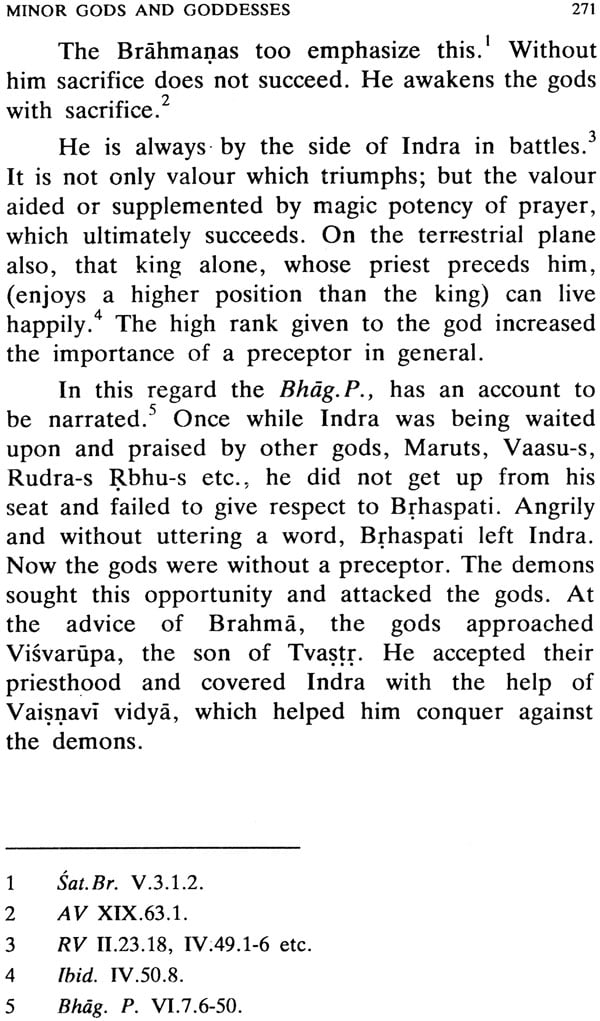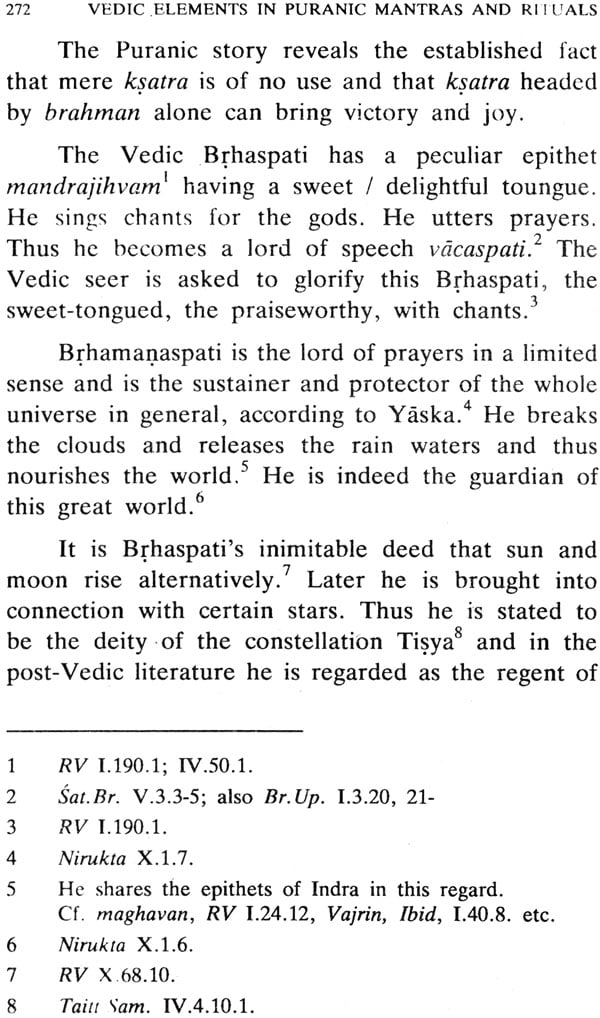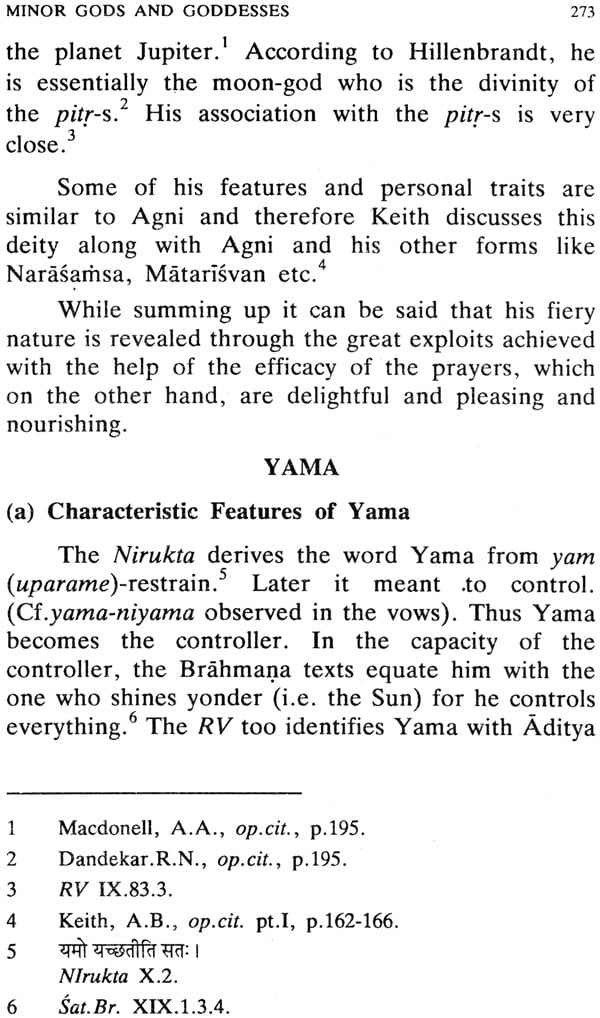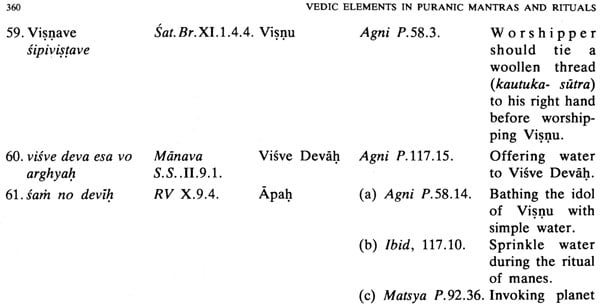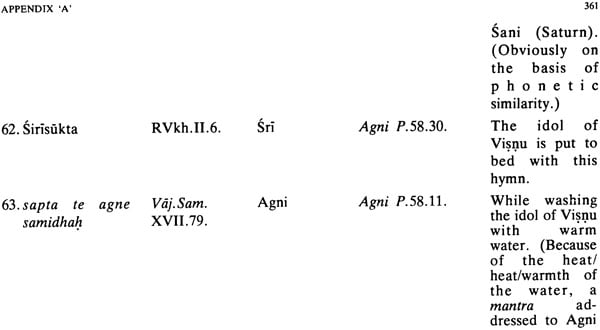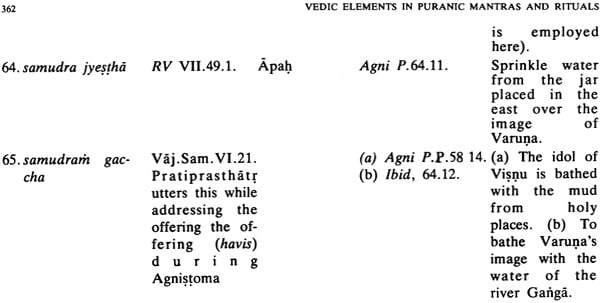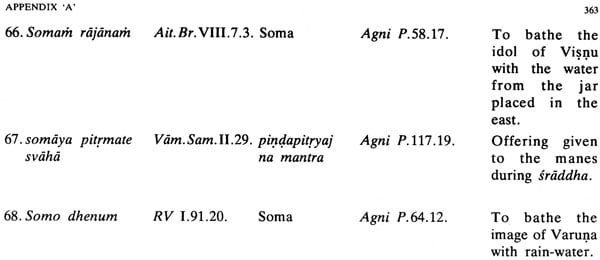
Vedic Elements In Puranic Mantras and Rituals
Book Specification
| Item Code: | IDH173 |
| Author: | Dr. Gauri Mahulikar |
| Publisher: | Nag Publisher |
| Language: | English |
| Edition: | 2000 |
| ISBN: | 8171015409 |
| Pages: | 399 |
| Cover: | Hardcover |
| Other Details | 8.6" X 5.8" |
| Weight | 520 gm |
Book Description
About the Book
The book presents a comparative study of some Vedic elements such as deities, mantra-s, rituals, myths etc., reflected in the Purana-s. Purana-s, the literature of the masses, attempt at the re-statement of the meaning of the Vida-s in their own style. In doing so, they resort to additions, omissions, simplifications and modifications; yet the main stream is never lost sight of.
Well considered arrangement of the chapters and two appendices, giving a bird's eye-view of the position of the Vedic mantra-s in the Purana-s, special features of the book. It is hoped that this seminal work, presenting a comparative angle, would be of great help to those interested in such studies.
About the Author
Dr. Gauri Mahulikar, a lover of Sanskrit form her childhood, is a promising scholar and researcher.
Passing both her graduate and post-graduate courses from the University of Mumbai, with top rank, Gauri mahulikar won the Limji gold medal for her dissertation, "Ancient Greek Dramas and Bharata's Natyasastra.
She has presented many research papers in different national seminars and oriental conferences. Besides these, she has some research articles, which have been published in reputed journals.
The Title of the book - 'Vedic Element in the Puranic mantra-s and rituals' The Puranas are a class of literature which attempt at the re-statement of the meaning of the Vedas in their own style. While doing so, the Puranic texts never disregard the Vedic traditions. Being very proud of their ancient heritage, the Puranas, sometimes modify and simplify the Vedic concepts but never bypass them totally. In each and every minute detail of the daily chore, such Vedic glimpses can be seen.
Element means a componet part. Vedas are regarded as the whole and Puranas, a part of it, a component part, which hardly deviates from the whole. Being a component part, Puranas can never be separated from the Vedas and therefore they are to be interpreted and studied in the light of the Vedas. On the other hand Vedas too, devoid of the Puranic background are not properly understood. Hence the Vedic elements in the Puranas are dealt with in this work. By element it is meant that whatever is vedic in notion, conception and perception, found in the Puranas, that is to be considered. But this would be a very vast subject. Therefore, the Vedic element is restricted only to the mantra-s and rituals of the Puranas. (The rituals are regarding the deities and hence they are discussed). Many legends and myths are related to rituals. Hence, an inclusion of myths and mythical accounts regarding the deities. For easy and quick comprehension, the chapters are named after the deities. The work is based mainly on the information and material from the Puranas and therefore, the order of the deities in accordance with the superiority of the Puranic dieties. Though this work is not based on the Vedic studies as such, the information from the Puranas is compared with the Vedic references wherever possible.
Selection of the topic
Many scholars, so far, have studied the Puranas in the light of the Vedic background, which Agrawala says, "was "their (Puranas') main expositional purpose as enuciated in the dictum that the Vedas are to be substantiated with the Itihasa and Purana. However, the works of the scholars are restricted mainly, to the social, historical and geographical material. Similarly there are works oil independent Puranas such as Matsya, Agni, Markandeya." Brahma:
yayu,1 Bhavisya2, Linga3 , Garuda4, Kurma5 , Bhagavata6 etc. With some exceptions all these works depict the cultural, historical, geographical, social or philosophical aspects found in the Puranas, The present work, however, tries to present the ritual and mythological material as well. Secondly, we find many Vedic mantras employed in different contexts of worship by the Purana-writers. These mantra-s at places, are addressed altogether to a new deity, not intended by the Vedic seer. Such interesting places are traced back to their original Vedic sources to give a clear picture of their use in different contexts.
Regarding the influence of the Vedas on the Puranas, there is a difference of opinion. Gyani feels that 'the Vedas, though regarded as divince revealations, did not exercise any direct influence on the religious life of the people as such," whereas Hazra says that 'the authors of the Puranas realized that unless the authority of the Vedas was established among the people, the popularization of the asrama-dharma was almost impossible. Hence they adopted various means for the purpose" With due respect to Gyani's work, it can be stated that even though the Vedic rituals were not practised in toto during the Puranic days, the modified and simplified version of the Vedic ritualism was certainly observed through the observance of the vows etc. It is true that many times the Puranas refer to the meditation of certain Vedic hymns, without referring to the cult of Vedic ritual; but it can be justified that during the passage of time the Vedic ritual cult lost its popularity but the recitaton of the mantra-s was already a part of the routine and so the mantra-s remained in practice whereas the rituals were forgotten.
Considering all these points, it was found that the topic of research was of much more interest and hence it was selected.
| PREFACE | iii-iv | |
| ABBREVIATIONS | v-vii | |
| CHAPTER I: | INTRODUCTION | 1-16 |
| (1) The Title of the book | 1 | |
| (2) Selection of the Topic | 2 | |
| (3) Antiquity and Importance of the Puranas | 4 | |
| (4) Deities | 7 | |
| (5) Ritual Worship | 7 | |
| CHAPTER II: | VISNU | 17-64 |
| (1) Visnu as a solar deity | 17 | |
| (2) Ritual Worship | 21 | |
| (3) Vedic Yagas and Vows | 31 | |
| (4) Mantra-s regarding Visnu | 44 | |
| (5) Myths regarding Visnu | 48 | |
| CHAPTER III: | SIVA | 65-104 |
| (1) Rudra-Siva similarity | 65 | |
| (2) Birth of Siva | 66 | |
| (3) Association with Agni | 67 | |
| (4) Ritual Worship | 71 | |
| (5) Vows and Vedic Yaga-s | 84 | |
| (6) Mantra-s regarding Siva | 93 | |
| CHAPTER VI: | BRAHMA | 105-132 |
| (1) Creation | 105 | |
| (2) Ritual worship | 112 | |
| (3) Myghs regarding Brahma | 123 | |
| CHAPTER V: | INDRA | 133-168 |
| (1) Personal traits and epithets | 134 | |
| (2) Birth and nature of Indra | 141 | |
| (3) Ritual worship of Indra | 150 | |
| (4) Myths and mythical accounts | 160 | |
| regarding Indra | ||
| CHAPTER VI: | AGNI | 169-189 |
| (1) Agni - birth, nature and epithets | 169 | |
| (2) Rituals regarding Agni | 180 | |
| (3) Myths regarding Agni | 185 | |
| CHAPTER VII: | SUN | 190-208 |
| (1) Natural traits of the Sun | 191 | |
| (2) Ritual worship and the | 194 | |
| Vedic mantra-s regarding Sun | ||
| (3) Myths regarding Sun | 205 | |
| CHAPTER VIII: | MINOR GODS AND GODDESSESS | 209-288 |
| (1) Varuna- | 209 | |
| (a) Personal information | 209 | |
| (b) Rituals and Worships | 213 | |
| (c) Myths regarding Varuna | 220 | |
| (2)Soma- | 222 | |
| (a) Birth of Soma and his natural traits | 223 | |
| (b) rituals and Worships | 226 | |
| (c) Myths regarding Soma | 231 | |
| (3) Apah - Water | 234 | |
| (4) Asvins - | 246 | |
| (a) Birth of Asvins | 246 | |
| (b) Rituals regarding Asvins | 250 | |
| (c) Myths regarding Asvins | 252 | |
| (5) Lessor Female Deities - | 254 | |
| (a) Aditi | 255 | |
| (b) Sarasvati | 257 | |
| (c) Laksmi | 259 | |
| (d) Uma / Parvati-Gauri | 263 | |
| (6) Brhaspati | 270 | |
| (7) Yama - | 273 | |
| (a) Characteristic features | 273 | |
| (b) Myths and rituals: | 276 | |
| (8) Ganesa | 282 | |
| (9) Dattatreya | 284 | |
| (10) Maruts | 285 | |
| (11)Visve Devah | 285 | |
| (12) Vastospati | 285 | |
| (2) Sacrifice - | 302 | |
| Concept | 303 | |
| origin | 303 | |
| Ritual mistake | 306 | |
| Ritual tonsure | 307 | |
| Ritual fast | 308 | |
| Types of Sacrifices - (Vedic) | 308 | |
| Types of Sacrifices - (Puranic) | 313 | |
| Navagrahayajna or a Grhamakha | 317 | |
| Ritual gift - daksina | 322 | |
| (3) Sraddha - | 325 | |
| Types of Sraddha | 325 | |
| Types of Sraddha | 327 | |
| Food at Sraddha | 330 | |
| Sraddha with mantra-s | 331 | |
| CHAPTER X: | FINIDINGS IN BRIEF | 335-339 |
| APPENDIX 'A' | 341-366 | |
| APPENDIX 'B' | 367-371 | |
| BIBLIOGRAPHY | 373-388 | |
| INDEX TO IMPORTANT WORDS | 384-393 |
